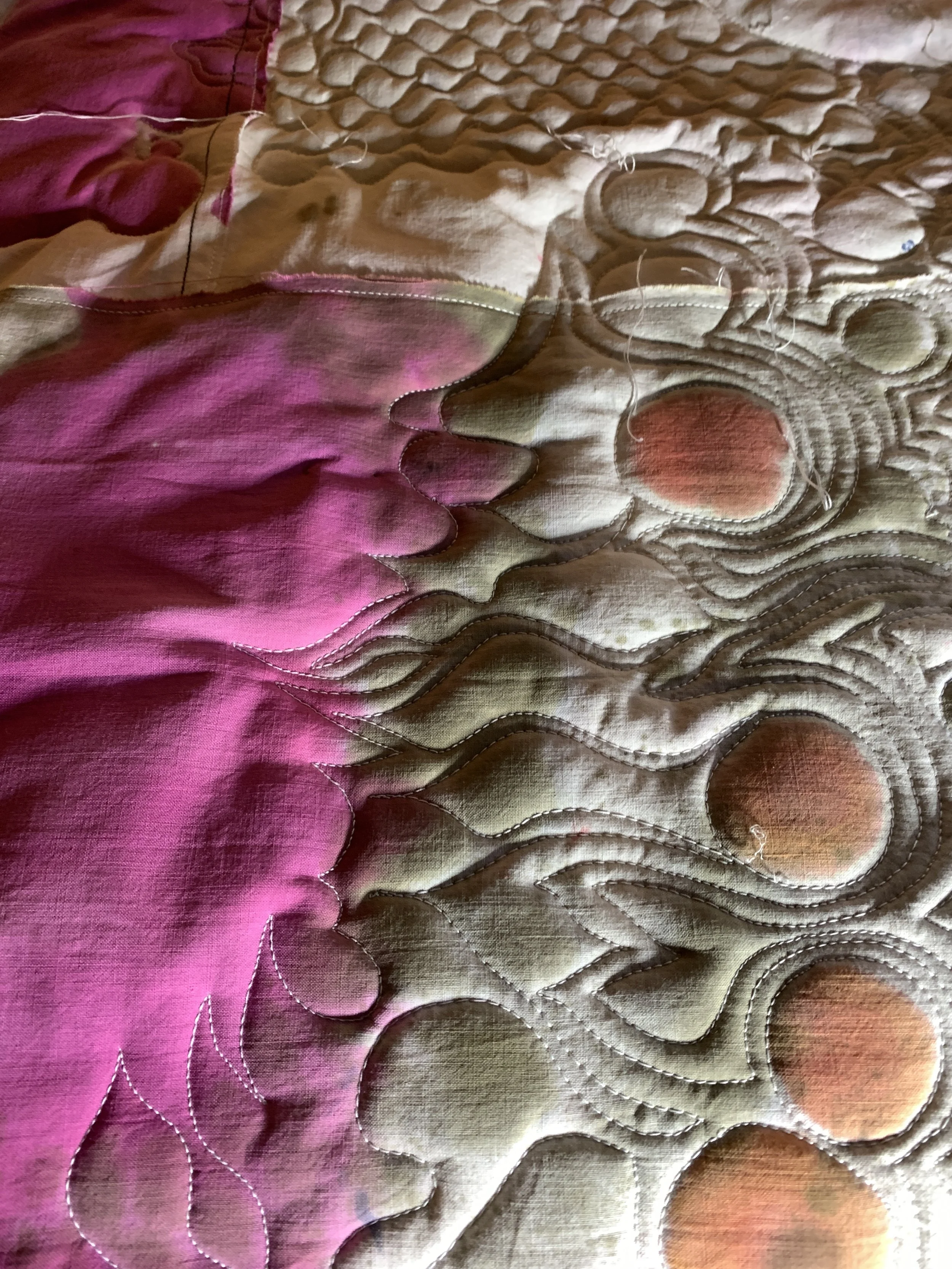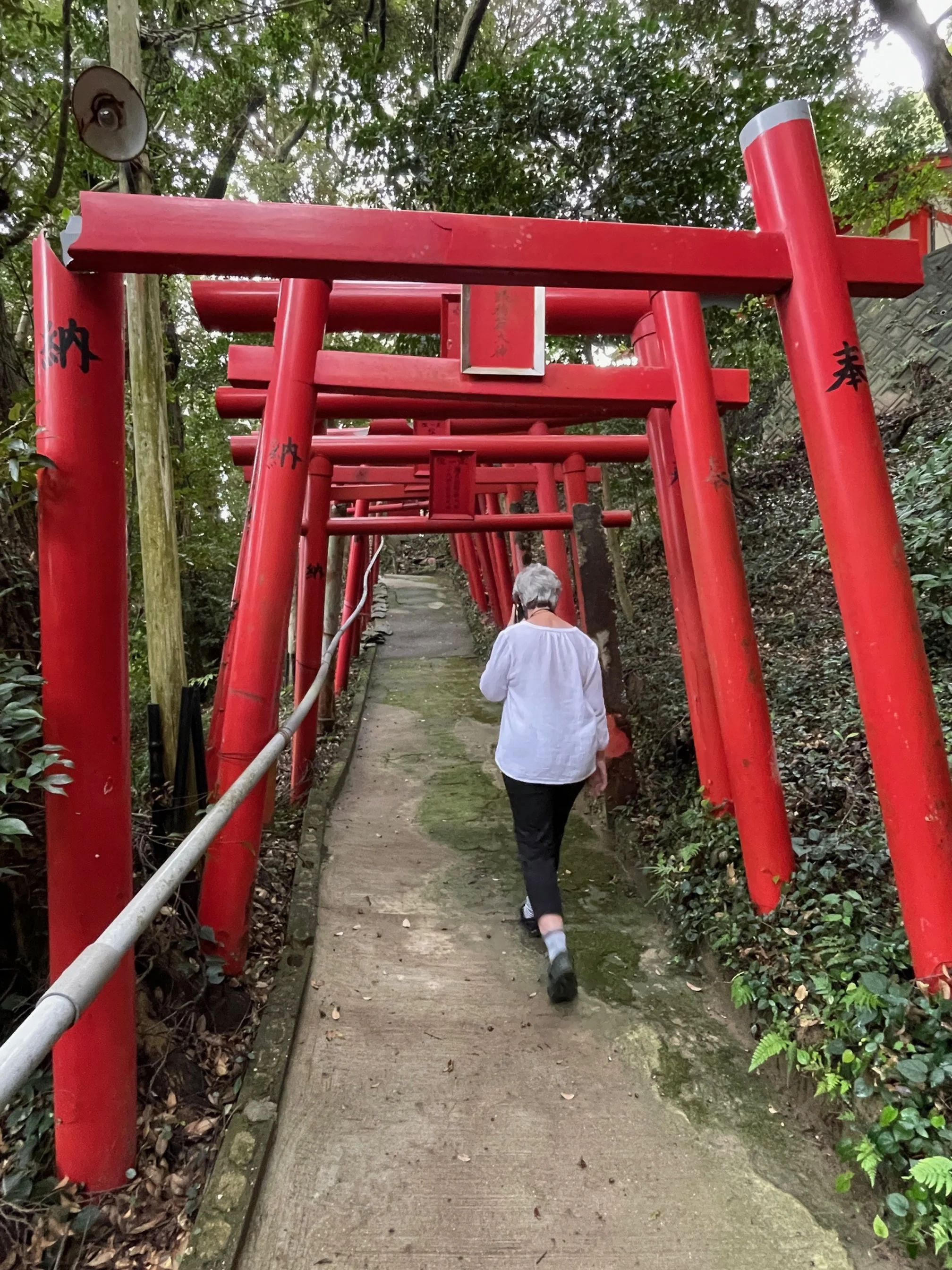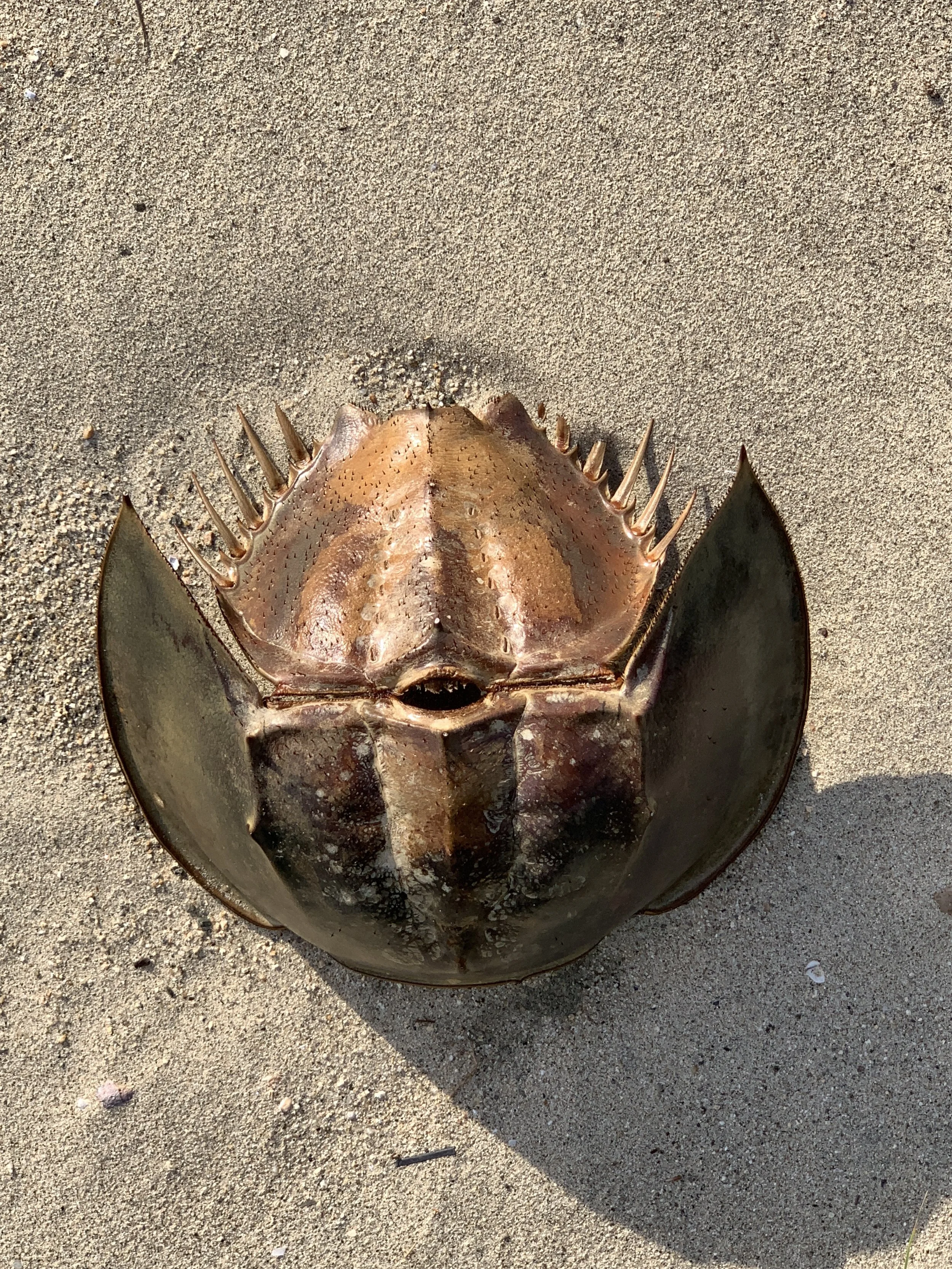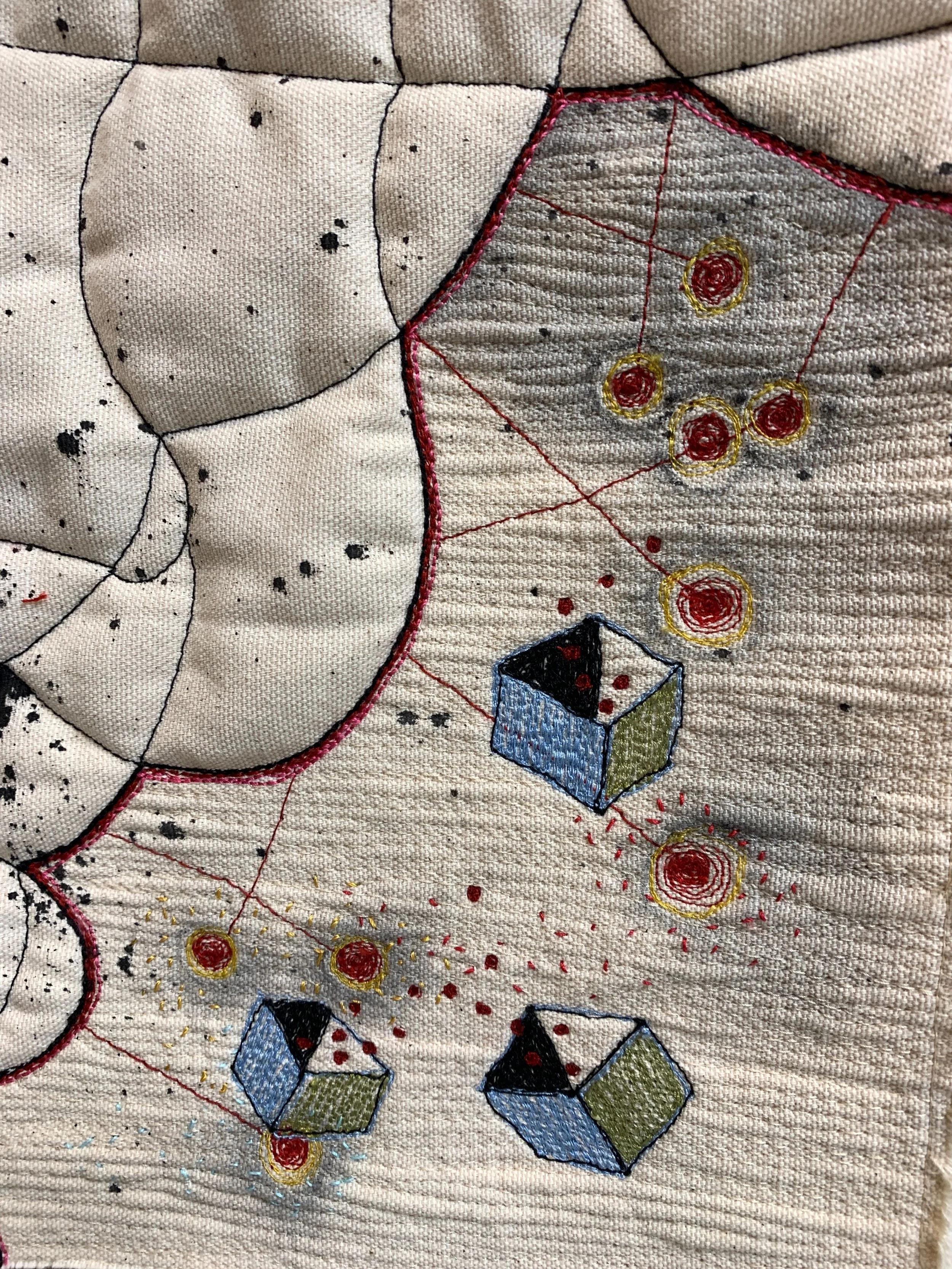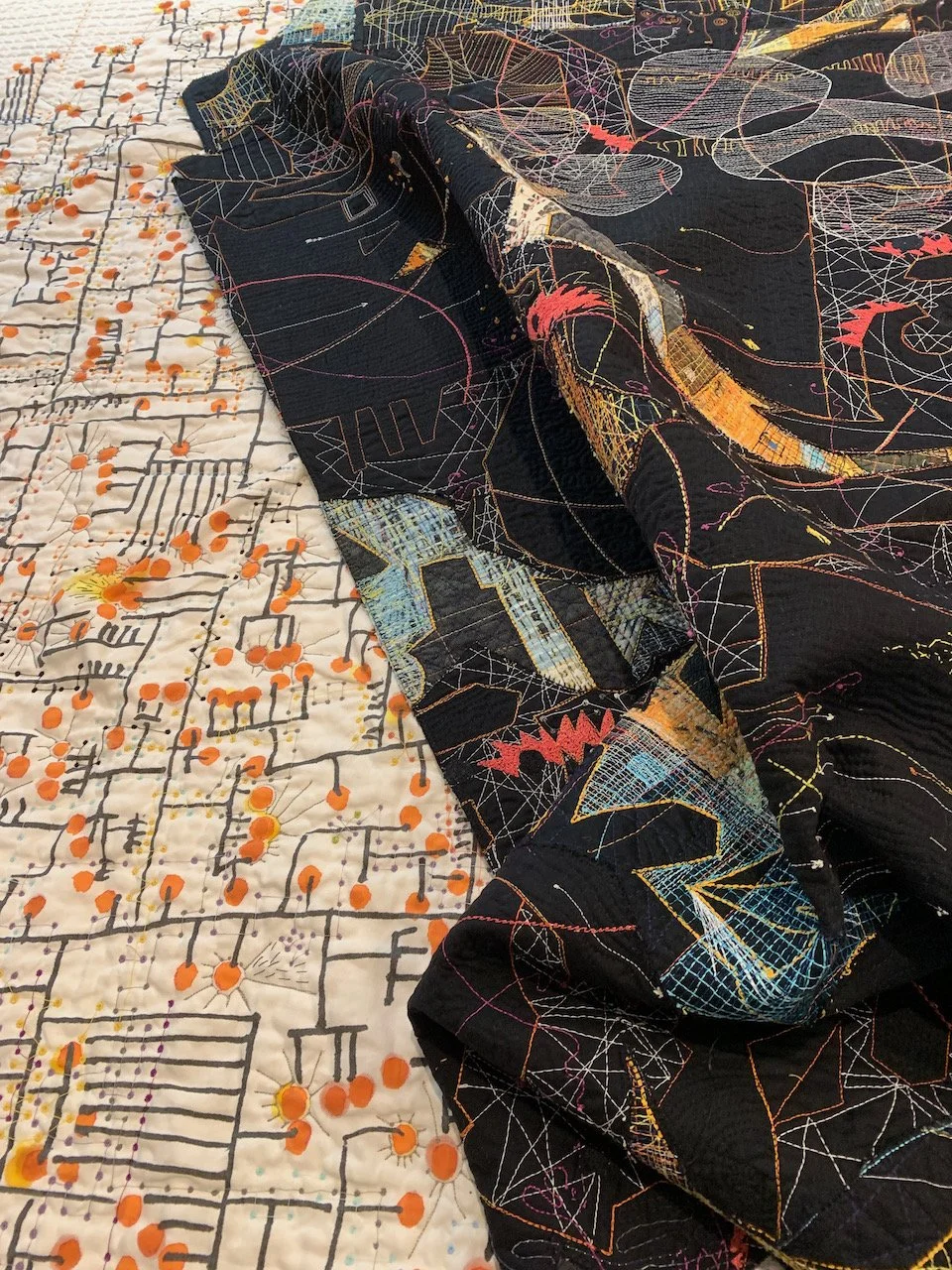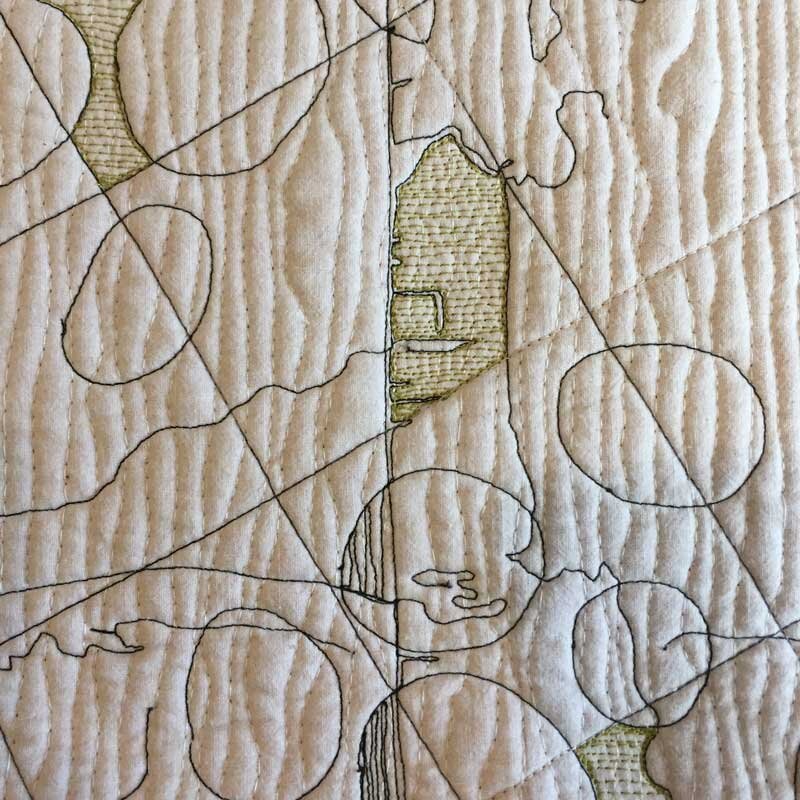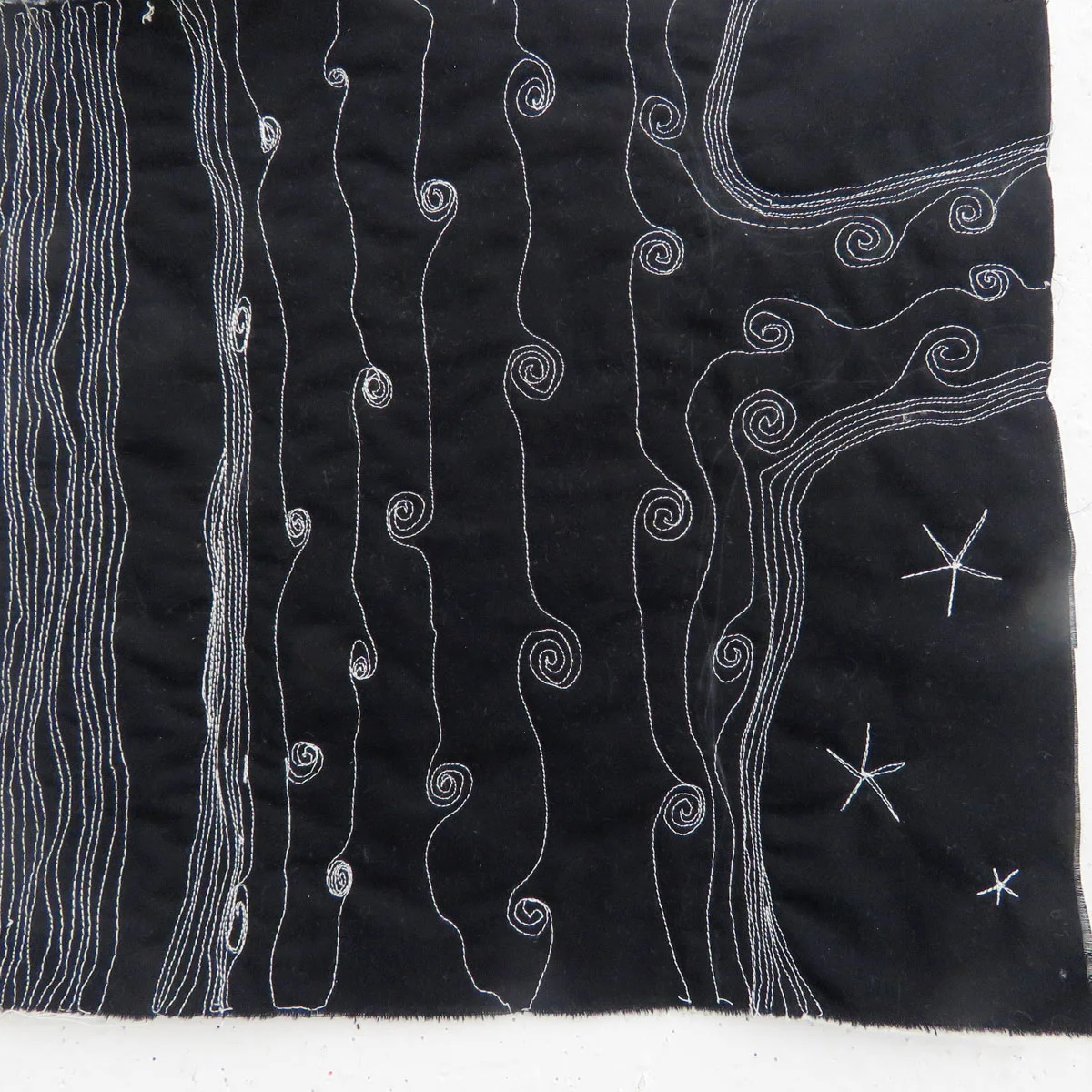I watch the road beneath my feet for inspiration as I walk. Asphalt cracks mended with black tarlike paint strokes, crabgrass breaking the surface of sidewalks, crumbling edges being eaten by the undergrowth, worms crawling across the surface in search of water and safety. My phone pics have an endless catalog of the earth pushing back and the impermanence of our effect on nature. Here’s a couple of pics I took on my morning walk of some roadway paint wearing away. The forms and line were the inspiration behind this month’s experiments.
Starting with a blank piece of cotton canvas I stitched in some of those lines I saw on the street. The wool batting beneath that top layer of canvas gave me a billowing effect. It seemed to swell the fabric. I emphasized the swelling with tight parallel lines of stitching in thread that matched the fabric color. Then I added a strong double thick line of stitching around the billowing forms.
The tightly stitched surface gave me space to add active linework, color and cartoon. I used watered down India ink to emphasize the red and yellow dotted elements. The contrast between the tight stitching and the billowing foreground added depth. This shows the ink in a wet stage. It dried lighter overall.
Several stages of layered stitch later I have detailed, complicated patterning. When I added the pale blue boxes as a new layer of information they didn’t stand out enough so I added fill and a black outline to reinforce them.
Below is a progression series showing the layering of stitch that transformed the surface of the cloth.
At this stage I am wondering just how much more I can add before the needle won’t go through the cloth properly. I may have to wait a bit to decide. I may stuff the billowing parts even more. I may do more hand stitching. All in all it was a good experiment and I may do this again on a larger piece.
It’s a study in what lies beneath.





